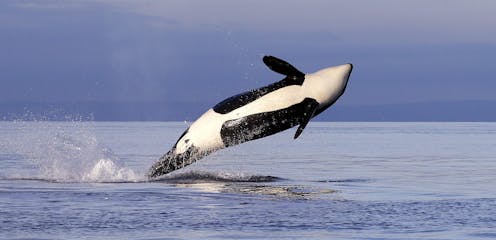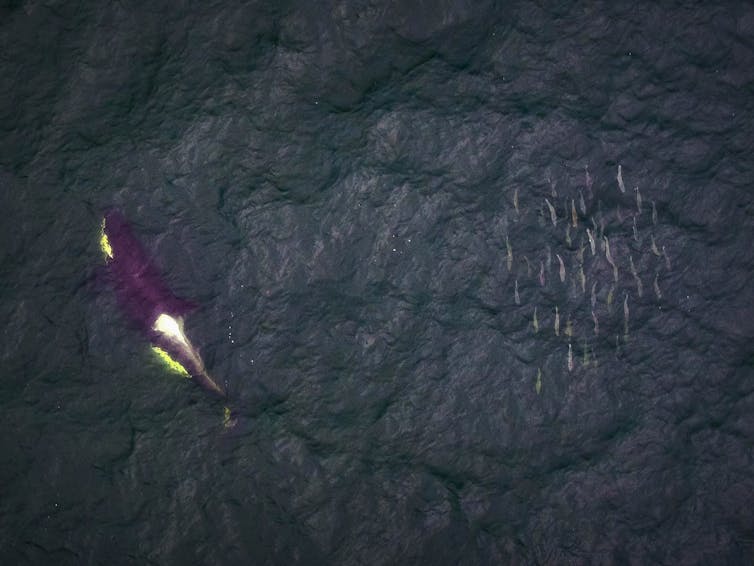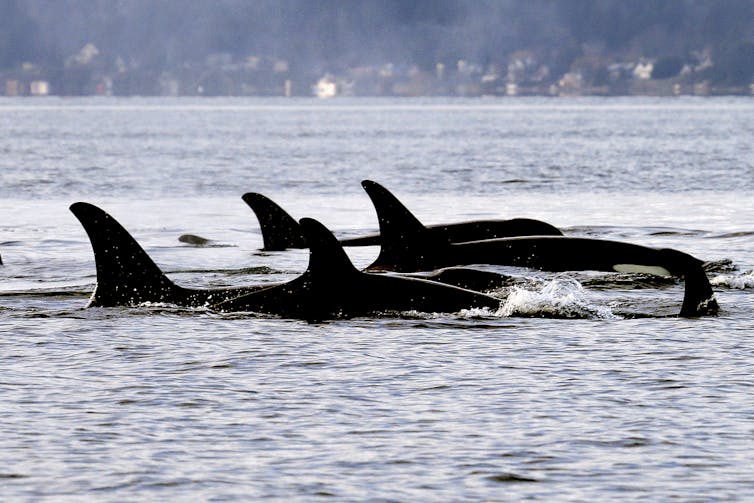
As marine species continue to decline worldwide, the southern resident killer whale population — which now stands at 75 individuals — along the west coast of North America, has baffled scientists who are trying to understand why this population is struggling.
Studied extensively since the mid-1970s, these whales are considered endangered today. Food shortage, vessel traffic and water pollutants have affected their fertility, body condition and social behaviour. In fact, food shortage is said to be one of the primary causes of the declining whale population, which feed primarily on chinook salmon. This salmon species can constitute up to 90 per cent of the southern resident killer whale’s diet during summer.
In the late 1980s, the Canadian government applied restrictive fishing regulations for chinook salmon to protect the population, leading to a drastic decline in commercial fisheries. However, the chinook salmon stocks of the Salish Sea continued to decline. Today, most chinook salmon stocks that the southern resident killer whales feed upon are at very low levels.
As a researcher in ecosystem modelling, I have studied the predator and prey interactions between the southern resident killer whales and their favourite salmon preys since 2019. The declining salmon and whale numbers raised a critical question: Is the southern resident killer whale population solely reliant on the abundance of salmon? And, if so, since when?
The predator and the prey
Along with researchers from the University of British Columbia and marine mammal experts, I developed a bioenergetics model to compare the prey abundance with the energetic requirements of these whales over the last 40 years.
We estimated that these whales could capture about 12 fish per day and evaluated whether those fish were enough to sustain the energetic requirements of the population from May to October. Chinook salmon populations — targeted by the southern resident killer whales — originate from different geographical areas in the Salish Sea and along the west coast of Vancouver Island.

The energy available to these whales depended not only on the abundance of chinook salmon present in their hunting grounds, but also on the size and age of the fish.
A recent study suggested that most Northeastern Pacific chinook salmon have declined in size over the last decades, and recent evidence points that the older, fatter fish are also becoming more scarce in several populations.
We found that these whales were not getting enough food for six of the last 40 years and lost about 17 per cent of their energetic requirements on average. That is equivalent to an adult human missing out on their daily breakfast.
We found that the southern resident killer whale population also consumed less adult chinook salmon than harbour seals in recent years, and less adult chinook salmon than fisheries over the entire time period. It is now essential to estimate the role of fisheries and marine mammal predation on the chinook salmon populations targeted by these whales.
Who is to blame?
Southern resident killer whales constitute a very small population, making them vulnerable to various factors that could impact their reproductive ability, social behaviour or body growth.
A recent study suggested that the physicality of the southern resident killer whales have been worsening in recent years and that these observations could be linked to a decrease in food availability.

It is crucial to understand the primary causes for the decline in chinook salmon populations as well. Is it a result of predation by other animals, including other marine mammals? Degradation of habitats? Prevalence to diseases? Climate change?
The southern resident killer whales and chinook salmon are two iconic species of the west oast of Canada, both of which are in need of conservation. They have a high economic value for tourism and fisheries and are highly culturally important animals for Coast Salish First Nation Communities.
Predator-prey relationship holds the key
The southern resident killer whales are not like any other killer whales. They have a unique genetic profile, vocalization characteristics and geographical distribution. Preserving such uniqueness in a natural ecosystem is essential for promoting biodiversity.
We need to look at the link between predators and their prey to understand the trends observed in other similar resident killer whale populations. For example, the northern counterpart of the these whales — referred to as the northern resident killer whale population — feed on similar prey species but have been increasing over the last 40 years.
Today, it is unclear how prey drive these two populations in different directions, and future research on northern resident killer whales might also help us solve the mystery of the decline in the population of its southern counterparts.
It is time for governmental, Indigenous, research and fisheries organizations to unite their efforts to determine what needs to be done in order to protect this whale population and their prey of choice.
Fanny Couture does not work for, consult, own shares in or receive funding from any company or organisation that would benefit from this article, and has disclosed no relevant affiliations beyond their academic appointment.
This article was originally published on The Conversation. Read the original article.







